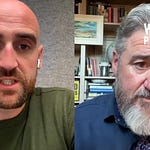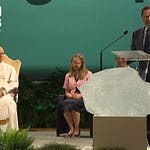Outro of the Day
Why the intro theme from 2001: A Space Odyssey - a meditation on how the fate of humanity is bound up with making good decisions about technology?
Is that really a question?
We’re on a bit of a carbon dioxide removals kick this week. The Climeworks ‘headwinds’ we spoke about with
in our previous episode continue to blow.The question is whether they achieve such force that they affect not just one firm but direct air capture (DAC) and the broader effort around using tech to remove greenhouse gases from the atmosphere.
While DAC commands a lot of attention - for reasons we get into in today’s episode - it isn’t the only pathway. Carbon Technology Research Foundation (CTRF) has been funding research that looks at a very different set of pathways - using biotech to boost the ability of plants and micro-organisms to eat more of the gases that are heating up the planet.
In this conversation we spoke to two of CTRF’s top brass: Philippa Mina from her office in a satellite campus in Cornwall that is actually part of the University of Exeter, which must make for confusing scone/jam/cream problems at tea time; and Luke Williams, head of research, from what looked very much like a hotel room out of 2001: A Space Odyssey.
We talk through some of CTRF’s approach, and also what this moment might mean for the broader sector including things outside of DAC - and whether those other research areas might now get more attention. Such as the biotech projects they support.
We get into why it may still be early to take anything other than a portfolio approach to a set of approaches we will absolutely need to work at scale before this century is out, including engineered versions of plants, marine carbon sequestration, the importance of transparency and trust, and the funding conundrum in current climate research.
00:00 Introduction and Welcome
00:46 Guest Introductions and Background
02:21 Discussion on Carbon Removals
03:58 Challenges and Perspectives in Carbon Removal
07:37 CTRF's Approach and Projects
16:13 Funding and Future of Carbon Removal Research
Further Reading/Listening
New Scientist article on Mary Lidstrom’s work
Podcast with CTRF founder Stig Arff
State of CDR report - https://www.stateofcdr.org/
One Last Thing
Akshat Rathi interviewed Climeworks’ CEO about those headwinds - including the collapse in US supports for DAC hubs and its decision to lay off 20% of staff. Worth a listen:
All the Outros
Have a good weekend. Bit eclectic but we think our collection of outros is totally worth it:













